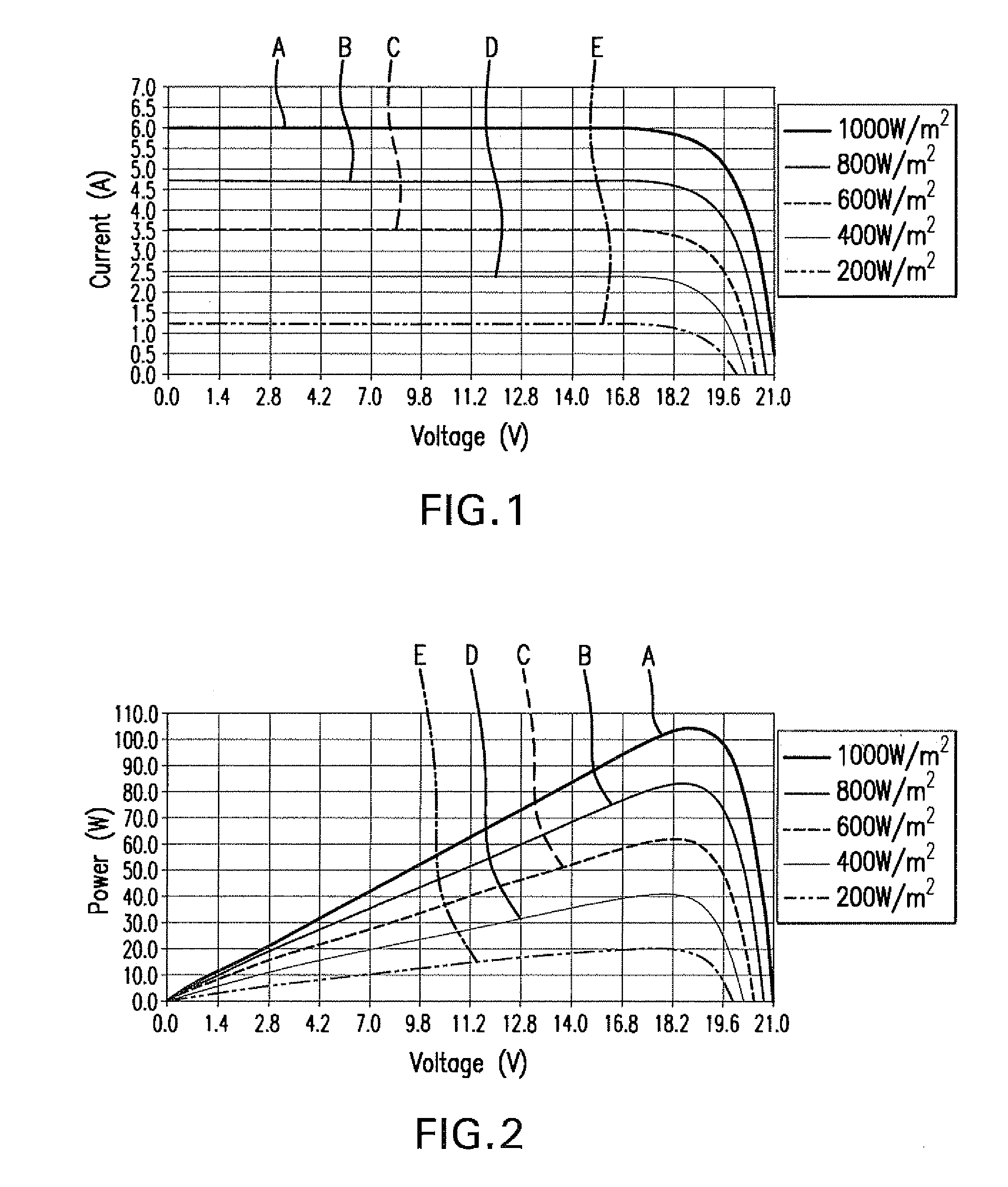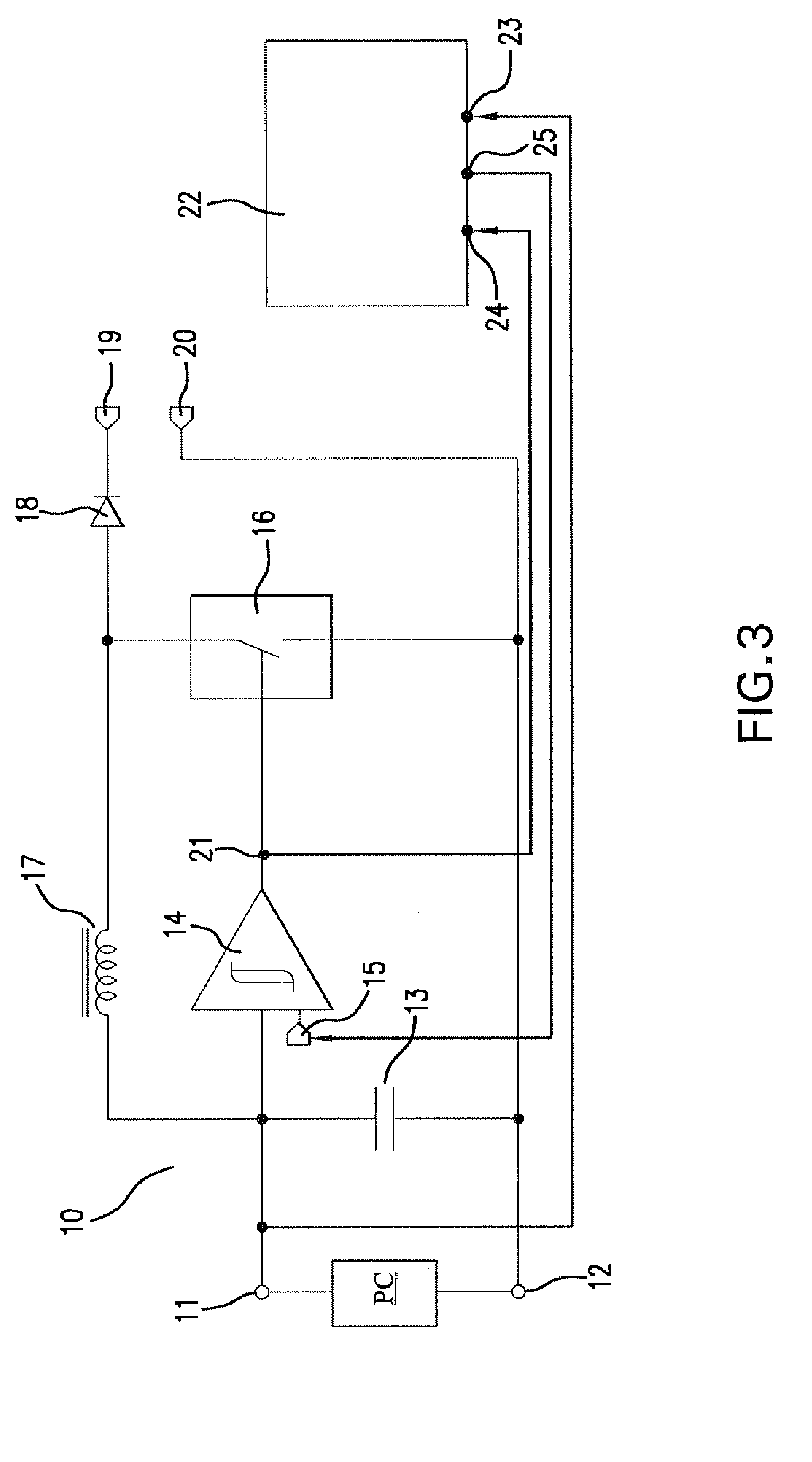Method for maximum power point tracking of photovoltaic cells by power converters and power combiners
a photovoltaic cell and power converter technology, applied in the direction of electric variable regulation, process and machine control, instruments, etc., can solve the problems of inherently inefficient architecture, inefficient rechargeable batteries, and inefficient architectur
- Summary
- Abstract
- Description
- Claims
- Application Information
AI Technical Summary
Benefits of technology
Problems solved by technology
Method used
Image
Examples
Embodiment Construction
[0045]The method of MPPT of a photovoltaic cell by a power converter is applicable when the power converter is a lone power converter MPPT a single photovoltaic cell and when the power converter is one of two or more power converters in a power combiner wherein each power converter is MPPT a photovoltaic cell to which it is allocated.
[0046]In order to obtain maximum output power from the power converter it is necessary to operate the photovoltaic cell at its MPP. To do this it is necessary to know the voltage and current at which the photovoltaic cell is operating and then use one of the various algorithms that have been developed (see, e.g., T. Esram And P. L. Chapman, IEEE Transaction on Energy Conversion, Vol. 22, Issue 2, 439-449 2007) to locate and track the MPP and operate the photocell at that point. Typically this means having sensors to directly measure both the voltage and current at which the photovoltaic cell is operating. The instant MPPT method operates without the nee...
PUM
 Login to View More
Login to View More Abstract
Description
Claims
Application Information
 Login to View More
Login to View More - R&D
- Intellectual Property
- Life Sciences
- Materials
- Tech Scout
- Unparalleled Data Quality
- Higher Quality Content
- 60% Fewer Hallucinations
Browse by: Latest US Patents, China's latest patents, Technical Efficacy Thesaurus, Application Domain, Technology Topic, Popular Technical Reports.
© 2025 PatSnap. All rights reserved.Legal|Privacy policy|Modern Slavery Act Transparency Statement|Sitemap|About US| Contact US: help@patsnap.com



